

The purpose of the project is to carry out such model investigations that can lead to fabrication of nanofilms for optical, opto-electronic, photocatalytic and sensoric applications. The research work also provides novel information about the colloid interactions of interfacial systems. The Laboratory has excellent facilities for the preparation and characterization of nanoparticles, (SiO2, ZnO, TiO2) (Fig. 1) nanolayers and for investigating the thermodynamics of interfacial colloids (Fig. 2).
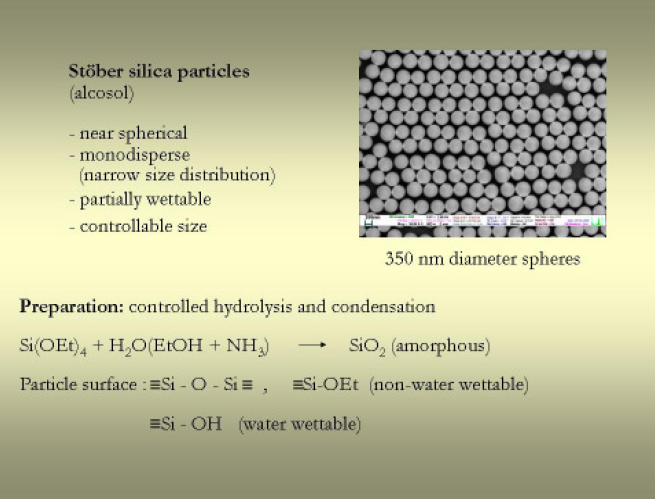
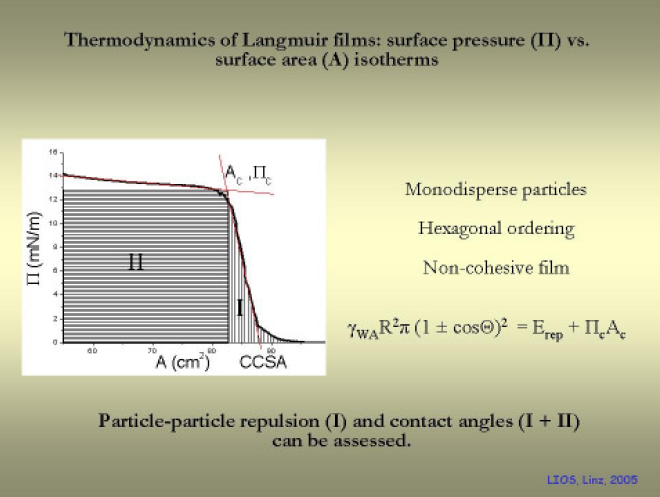
The Laboratory has experience in preparation of composite nanoparticles (Al(OH)3 – TiO2, Fe – SiO2) using wet colloid chemical routes. Light and small angle X-ray scattering methods (DLS and SAX) are available at the Department for the characterization of nanoparticles. Bottom up fabrication of nanostructured films is carried out by the Langmuir-Blodgett (LB) technique for future applications. In the first stage of the process, a stable lyosol of the colloidal nanoparticles is prepared. In the second stage, the particles are spread on an aqueous solution (or clean water) forming a monoparticulate Langmuir film that is subsequently transferred onto a solid support by the LB-technique (by a layer-by-layer procedure) (Fig. 3).
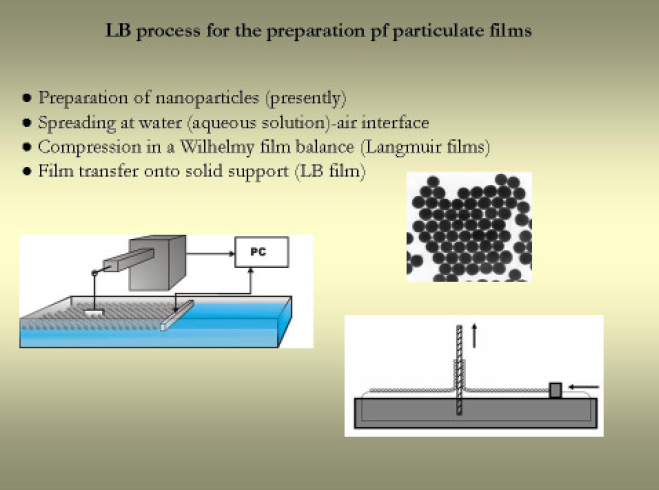
There are several advantageous features of the procedure. The size of the nanoparticles can be controlled during the sol preparation conveniently; and also the structure of the Langmuir and the LB-films can be properly modified by colloid chemical methods. Great flexibility is achievable by using mixed films and/or composite (core-shell) nanoparticles or by post-modification of the layers. The nanoparticulate films can be characterized in situ at the liquid/air interface via scanning angle reflectometry (SAR) and Brewster angle microscopy (BAM) coupled to a Wilhelmy film balance. Also optical spectroscopy and SAR are available for the characterization of nanofilms on solid substrates at the Department (Fig. 4). We can also use (in Hungarian cooperation) TEM, SEM, AFM and Mössbauer spectroscopy methods.
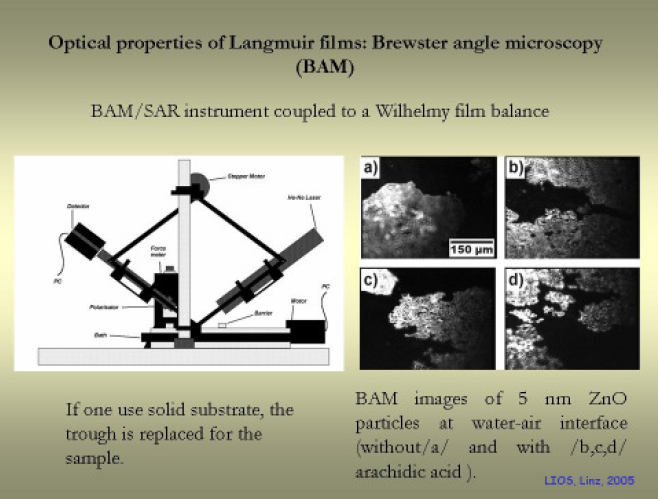
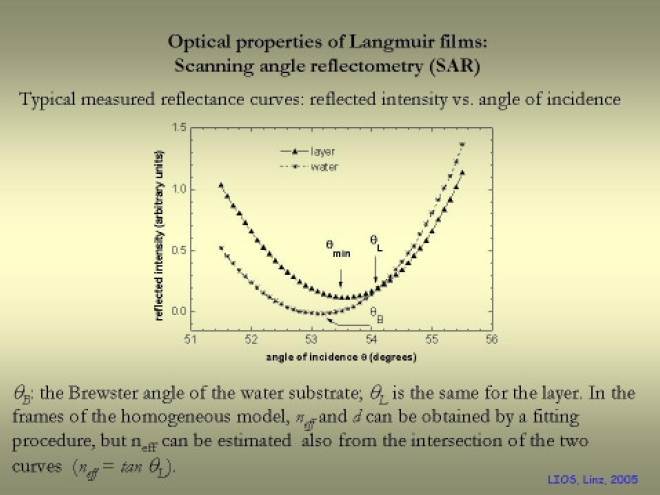
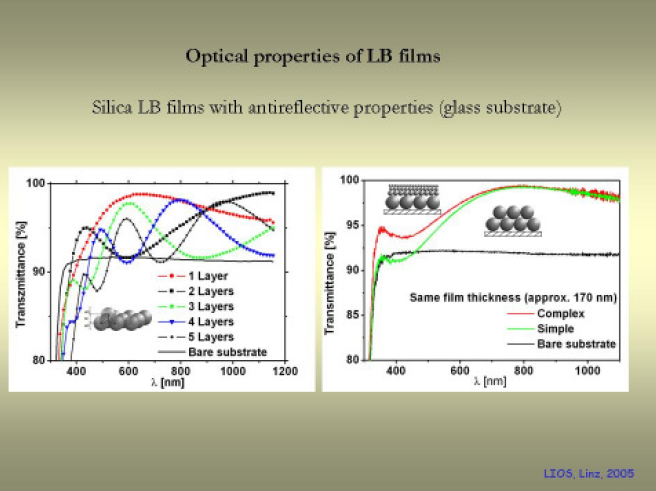
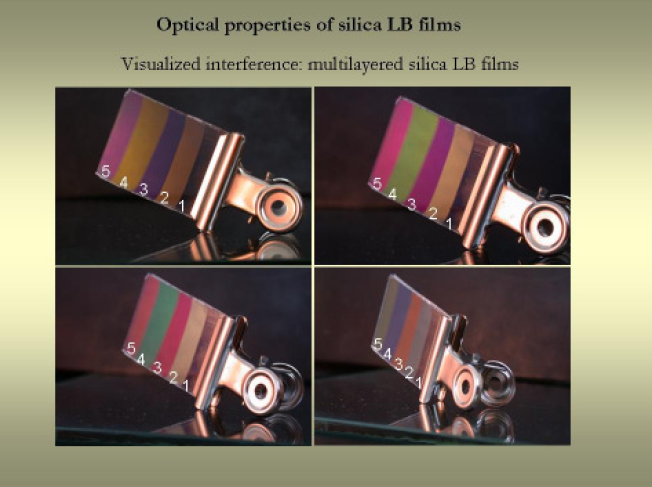
We also study the structure formation of Langmuir and Langmuir-Blodgett particulate films by molecular dynamics computer simulations (Fig. 5).
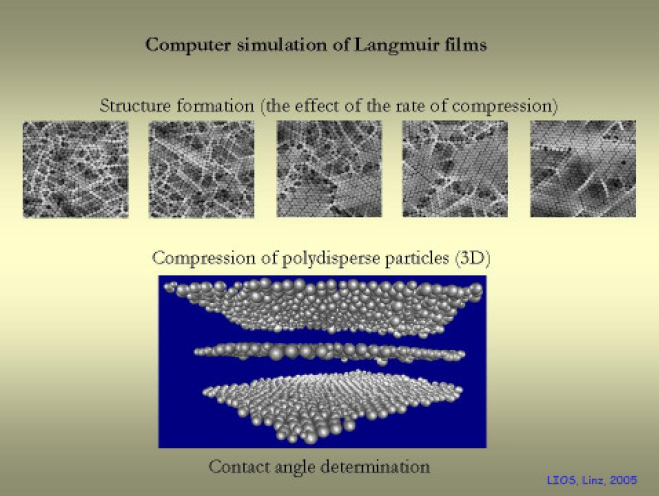
DNA delivery by silica nanoparticles functionalized by cationic porphyrin: design, structural and functional characterization of new non-viral vectors Wettability of surfaces showing nano-scale morphology (superhydrophobic and superhydrophilic behaviour) Preparation and characterization of water repellent wood surfaces